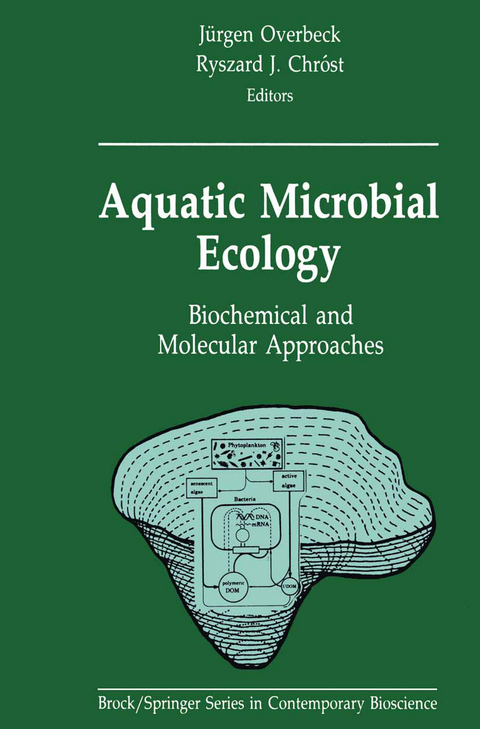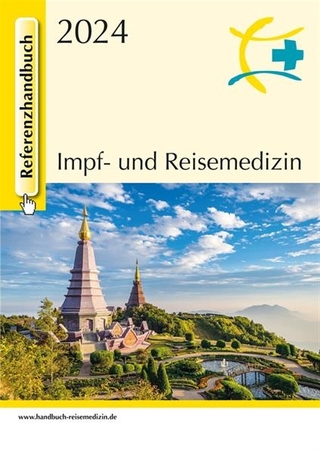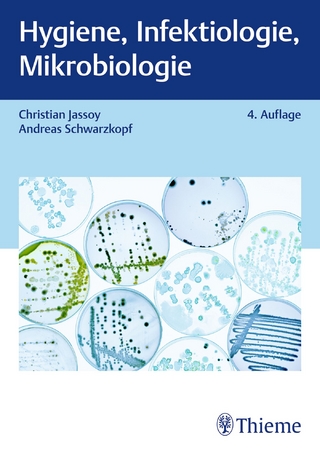
Aquatic Microbial Ecology
Springer-Verlag New York Inc.
978-1-4612-7991-4 (ISBN)
1 Introduction: Aims, Problems, and Solutions in Aquatic Microbial Ecology.- 1.1 The aims of microbial ecology.- 1.2 Novel solutions to “old” problems.- References.- 2 Origin, Composition and Microbial Utilization of Dissolved Organic Matter.- 2.1 Introduction.- 2.2 Origin and fate of dissolved organic matter.- 2.3 Concentration and characteristics of dissolved organic matter.- 2.4 Dissolved organic matter released by phytoplankton.- 2.5 Glycolic acid: a model compound of algal release.- 2.6 Dissolved free amino acids.- 2.7 Dissolved free carbohydrates.- 2.8 Polyphenols.- 2.9 Conclusions.- References.- 3 Microbial Ectoenzymes in Aquatic Environments.- 3.1 Introduction.- 3.2 Definition of an ectoenzyme.- 3.3 Association of ectoenzymes with microbial cells.- 3.4 Ectoenzyme secretion.- 3.5 Molecular control of ectoenzyme synthesis.- 3.6 Environmental control of ectoenzyme synthesis and activity in aquatic ecosystems.- 3.7 Methods for assaying ectoenzymes.- 3.8 Significance of ectoenzymesin aquatic environments.- References.- 4 Aspects of Aquatic Microbial Carbon Metabolism: Regulation of Phosphoenolpyruvate Carboxylase.- 4.1 Introduction.- 4.2 Basic strategies of biochemical adaptation to the environment.- 4.3 Anaplerotic reactions.- 4.4 Complexity of CO2 dark uptake.- 4.5 Phosphoenolpyruvate carboxylase.- 4.6 Assays, preparation and kinetic properties of phoshoenolpyruvate carboxylase.- 4.7 Regulation of phosphoenolpyruvate carboxylase by effectors.- 4.8 Phosphoenolpyruvate carboxylase and phosphoenolpyruvate carboxykinase.- 4.9 Concluding remarks: biochemical approaches at the ecosystem level.- References.- 5 Approaches to Bacterial Population Dynamics.- 5.1 Introduction.- 5.2 Numerical taxonomic approaches.- 5.3 Immunological approaches.- 5.4 Molecular approaches.- 5.5 Isoenzymes and genetic diversity.- 5.6 Future prospects.- References.- 6 RNA Chemotaxonomy of Bacterial Isolates and Natural Microbial Communities.- 6.1 Ecological relevance of bacterial taxonomy.- 6.2 Systematics of bacteria based on nucleic acids analysis.- 6.3 The concept of RNA chemotaxonomy.- 6.4 Methodology for the analysis of pure cultures by RNA profiles.- 6.5 General results of RNA profiles from pure cultures.- 6.6 Identification of bacterial isolates by RNA chemotaxonomy.- 6.7 Analysis of mixed bacterial cultures.- 6.8 Analysis of natural bacterial communities.- 6.9 Conclusions and future developments.- References.- 7 Plasmids and Their Role in Natural Aquatic Bacterial Communities.- 7.1 Introduction.- 7.2 Ecogenetics: a new concept of microbial ecology.- 7.3 Plasmids in natural bacterial communities of some aquatic habitats.- 7.4 Open questions.- 7.5 Molecular techniques.- 7.6 Future ecogenetics.- References.
| Reihe/Serie | Brock Springer Series in Contemporary Bioscience |
|---|---|
| Zusatzinfo | X, 190 p. |
| Verlagsort | New York, NY |
| Sprache | englisch |
| Maße | 155 x 235 mm |
| Themenwelt | Medizin / Pharmazie ► Medizinische Fachgebiete ► Mikrobiologie / Infektologie / Reisemedizin |
| Naturwissenschaften ► Biologie ► Genetik / Molekularbiologie | |
| Naturwissenschaften ► Biologie ► Mikrobiologie / Immunologie | |
| Naturwissenschaften ► Biologie ► Ökologie / Naturschutz | |
| Naturwissenschaften ► Biologie ► Zellbiologie | |
| ISBN-10 | 1-4612-7991-7 / 1461279917 |
| ISBN-13 | 978-1-4612-7991-4 / 9781461279914 |
| Zustand | Neuware |
| Haben Sie eine Frage zum Produkt? |
aus dem Bereich


